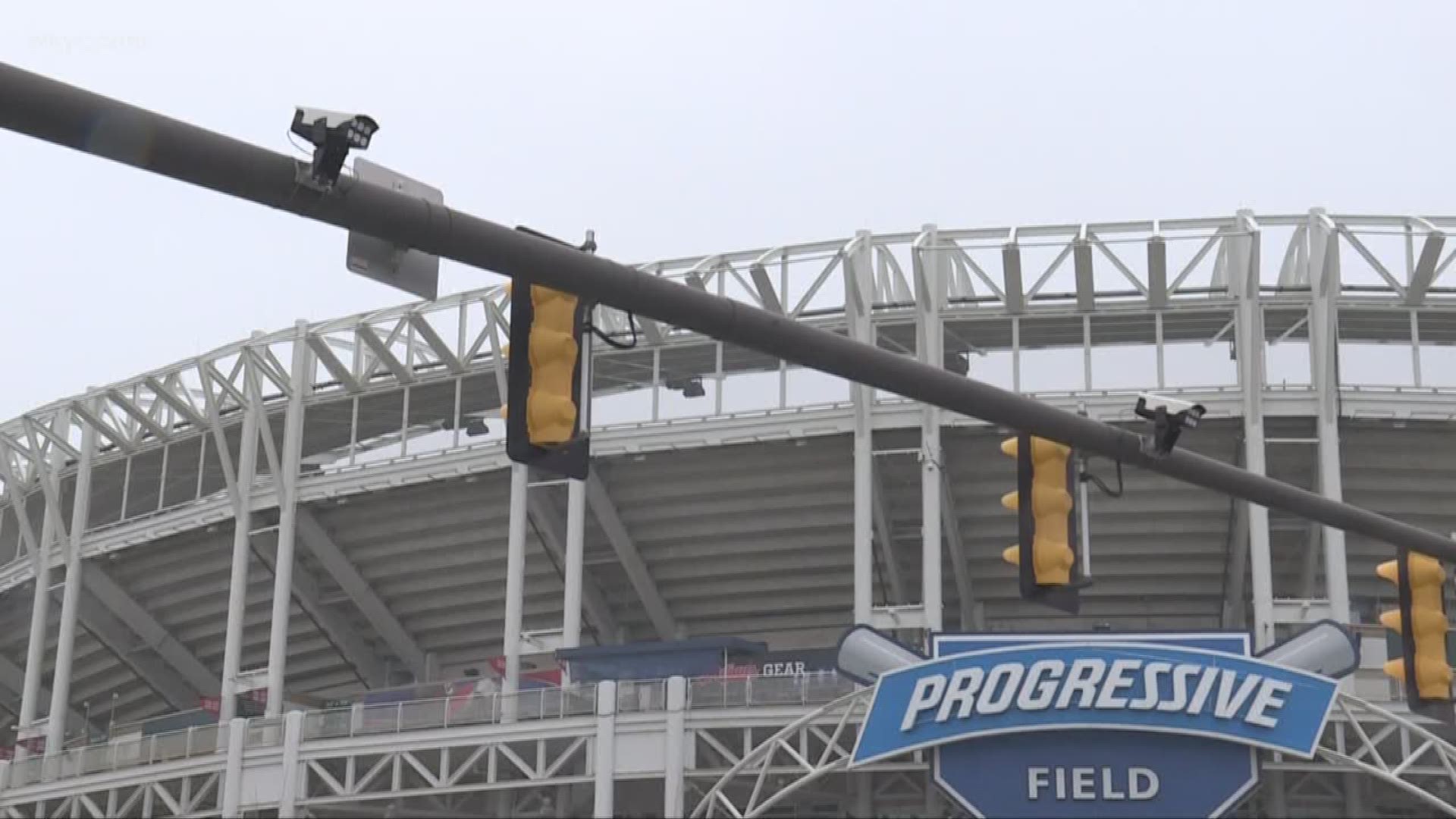It was just last week when police touted the use of automated license plate readers to catch a homicide suspect who had come to Lakewood from Florida. The LPRs – as they’re called by police – spotted Shelby Svensen’s car in the area and police knew it as soon as they plugged the stolen car’s license plate.
Now, Cuyahoga County will be expanding the program with a $500,000 infusion of funds from the Department of Homeland Security. This is on top of a combined $900,000 of initial funding by Homeland Security and the county general fund to jumpstart the program in 2017.
Chief of Public Safety and Justice Brandy Carney says the system immediately paid dividends following its installation, with local police chiefs sharing success stories. The county had LPRs installed in 20 cities in 2018 with more to come.
“We are identifying additional locations or cities throughout Cuyahoga county to expand on the current program,” said Carney.
How does it work?
The equipment is purchased from a company called Selex and is installed on utility and traffic poles in each city. Every car that passes through those intersections is photographed by the LPR. The system immediately uploads data that includes the license plate number, GPS coordinates (location), along with the time each car is captured. EVERY CAR.
The information is stored in a database for up to a year and is searchable by law enforcement to help locate criminals.
Carney says, “it’s another system that [law enforcement] can check if they are trying to find someone who is an immediate danger.”
The system is also able to reference terrorism hot lists and warrant databases, and can be used to locate vehicles involved in Amber Alert situations.
When the program was first announced, the ACLU argued in was an invasion of privacy. Carney says that’s not what it’s designed to do.
“It’s a tool for law enforcement,” Carney argued. “And unless they specifically search a plate or have an active hotlist of somebody that they’re looking for, that information just sits there through the retention period.”
In other words, there are no computer algorithms that are constantly searching for or tracking drivers’ movement or habits. A specific search query has to be initiated by law enforcement or an active “hot list” must be used for the system to flag a driver’s car.
Carney says the system is not capable of detecting speed or issuing citations for red light violations. It simply allows police to check to see if a criminal has been in a particular area.
“We’re not trying to penalize people,” Carney reiterated. “We’re really trying to have a law enforcement tool to get people off the streets that shouldn’t be there.”
Shelby Svensen’s arrest in Lakewood is a prime example of how it can be used.
Here’s a list of the 20 cities that have LPRs in use:
- Cleveland
- Cleveland Heights
- Euclid
- Fairview Park
- Garfield Heights
- Independence
- Lakewood
- Lyndhurst
- Maple Heights
- Mayfield Heights
- North Olmsted
- Olmsted township
- Orange Village
- Parma
- Shaker heights
- Solon
- South Euclid
- Strongsville
- University Circle
- Woodmere

